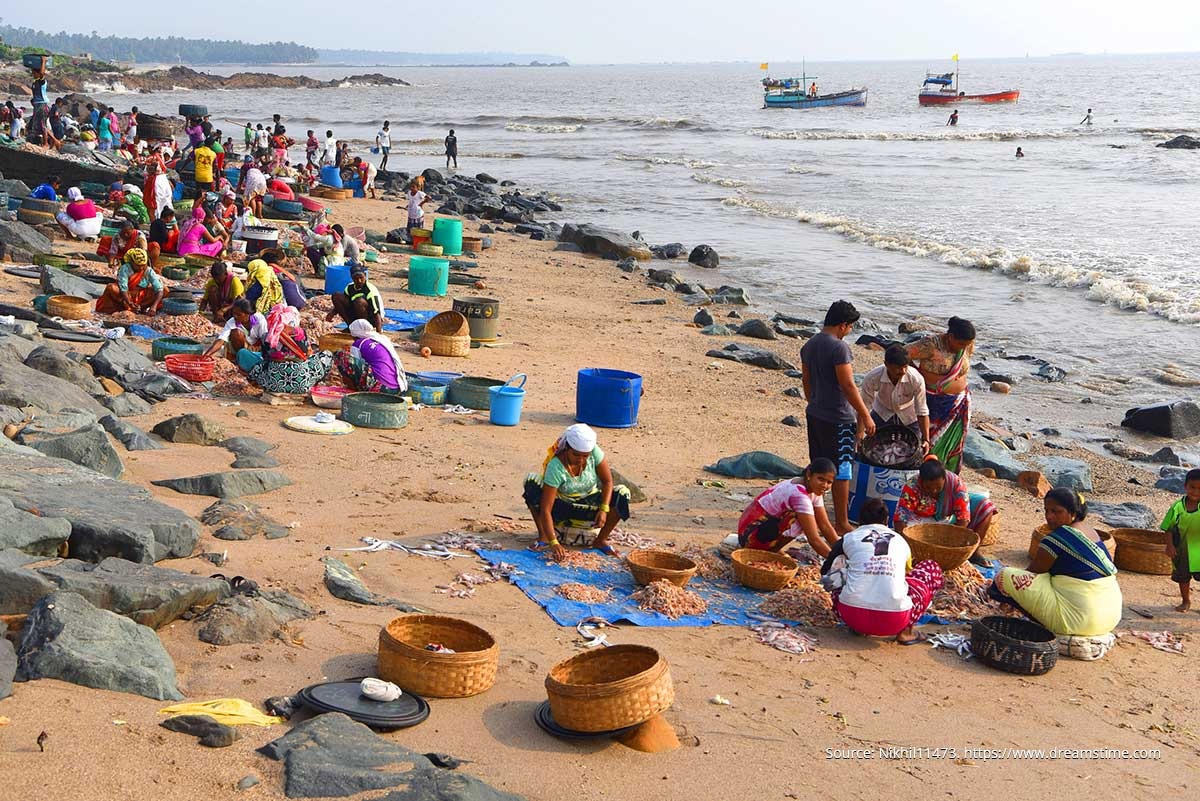India’s coastal communities are taking center stage in the battle against climate change, emerging as crucial “ocean guardians” who are pioneering effective, sustainable solutions to preserve marine biodiversity and adapt to climate impacts. With over 7,500 kilometres of coastline and more than 400 million people living in coastal regions, the need for urgent climate action is clear. From sustainable fishing practices to the restoration of vital blue carbon ecosystems, India’s coastal communities are showcasing innovative approaches that protect both local livelihoods and the environment.
Sustainable Fishing: A Tradition of Conservation
Fishing has long been a cornerstone of coastal life in India, particularly in states like Kerala, Tamil Nadu, and West Bengal. However, unsustainable fishing practices have placed immense pressure on marine ecosystems, leading to the depletion of vital fish stocks and the destruction of habitats. To address these challenges, India’s coastal communities are leading efforts in sustainable fisheries management, incorporating both traditional knowledge and modern scientific practices.
[1]In Kerala, for example, local fisherfolk collaborate with government agencies to create marine protected areas (MPAs) and enforce seasonal fishing bans that allow fish populations to recover. The state has seen the benefits of such initiatives, with increased fish stocks and healthier ecosystems. These initiatives not only protect marine biodiversity but also ensure the long-term economic viability of the fishing industry. As India aligns with its commitments made at COP28, such community-led efforts contribute significantly to the broader goal of sustainable resource management.
Restoring Coastal Carbon: Mangroves, Seagrasses, and Salt Marshes
India’s coastal ecosystems, particularly mangroves, salt marshes, and seagrasses, play a pivotal role in mitigating climate change. These blue carbon ecosystems are capable of sequestering carbon at rates far higher than terrestrial forests, making them vital to India’s climate mitigation strategies. Mangroves, in particular, protect coastal communities from the impacts of rising sea levels, storm surges, and coastal erosion, while also providing essential habitats for marine species.
The Sundarbans, the world’s largest mangrove forest, has been a focal point for restoration efforts, with local communities actively involved in replanting mangrove saplings and safeguarding these vital areas. [2]Recent reports from India’s Ministry of Environment, Forest and Climate Change highlight that the country is working to restore over 1,000 square kilometres of mangrove forests, especially in areas that face frequent cyclones and floods. The Sundarbans restoration, in particular, has gained international recognition as a model for blue carbon projects, contributing not only to carbon sequestration but also to the overall resilience of coastal ecosystems.
Moreover, India’s government and non-governmental organisations have increasingly invested in promoting blue carbon projects as part of national climate strategies. These initiatives align with India’s broader climate goals outlined in its Nationally Determined Contributions (NDCs) under the Paris Agreement, aiming to reduce emissions and enhance climate resilience through nature-based solutions.
Resilient Infrastructure: Strengthening Coastal Communities
In recent years, the frequency and intensity of cyclones and floods have posed significant threats to India’s coastal infrastructure. In response, local communities and state governments are building climate-resilient infrastructure to reduce vulnerability to these extreme events. These include elevated houses, cyclone-resistant shelters, and improved drainage systems designed to handle heavy rains and flooding.
[3]In Odisha, for example, the community-based approach to building cyclone shelters and restoring coastal mangroves has proven effective in minimising the impacts of cyclones like Yaas and Fani. Similarly, in Tamil Nadu, initiatives to elevate homes and create flood-tolerant agricultural systems are helping communities adapt to rising sea levels and unpredictable weather patterns. These resilient building practices not only protect lives and livelihoods but also reduce the long-term costs of climate impacts on infrastructure and agriculture.
Conclusion: India’s Coastal Communities Leading the Way
India’s coastal communities are leading the charge in climate action, combining traditional knowledge with modern solutions to address the challenges of climate change. Through sustainable fishing, blue carbon ecosystem restoration, and resilient infrastructure, these communities are playing a vital role in India’s climate goals and demonstrating the power of local, nature-based solutions[4]. As highlighted in recent discussions at COP28, their efforts align with India’s broader national strategies, offering valuable insights for global climate resilience. With continued support and scaling of these local initiatives, India’s coastal regions can serve as a global model for sustainable development, adaptation, and environmental conservation.
Disclaimer – The views and opinions expressed in the commentaries/blogs/articles are those of the authors and do not necessarily reflect the official policy or position of the Forum for Global Studies.

